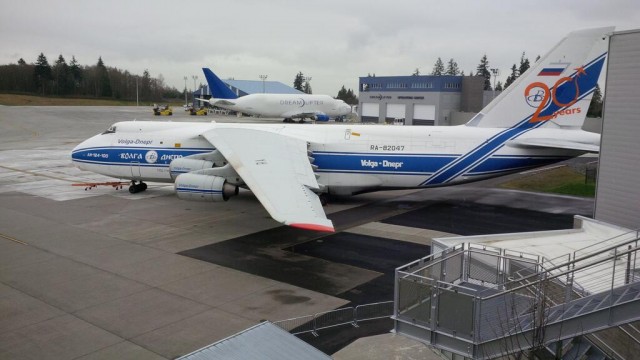
An Antonov AN-124 parked next to the Future of Flight with a Boeing 747 Dreamlifter in the background – Photo: Future of Flight
It is hard to deny that Paine Field is freak’n awesome. Not only is this where Boeing builds all their new 747s, 767s, 777s and most of their 787s; it also houses old warbirds and often sees the Boeing 747-400 Dreamlifter and sometimes an Antonov AN-124.
BONUS: Photo tour of the inside of an Antonov AN-124
It is always fun when catching some of these aircraft together. Today, an AN-124 was caught parked next to the Future of Flight (backed in) with a Dreamlifter in the background saying, “why hello.” Both are very cool cargo planes and getting them in the same picture is pretty epic.
Thanks to the Future of Flight for sharing their photo.
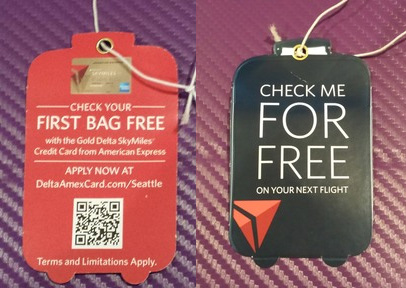
The tags found on bags coming into Seattle on Delta flights
Over the last few days I have heard some rumblings about luggage tags that have been showing up on luggage of passengers who have flown on Delta Air Lines (DL) to Seattle-Tacoma International Airport (SEA). They will be waiting for their bags at baggage claim, and when they show up, find a Delta / American Express advertising tag on them.
Some frequent fliers, on sites like Flyertalk.com, have not been so happy about the tags. Others on sites like HackMyTrip.com, title their story Delta Pisses Off Seattle Customers. The complaint was their bags were already taking long enough, why does Delta need to delay them more by putting unwanted advertising on them?
My first thought, honestly, was to be a bit annoyed as well. That would anger me if I had to wait longer for my bag just to find ads on them. I decided to give Delta a call and find out some more information on these tags and what the purpose was (I figured surely it wasn’t to anger passengers).
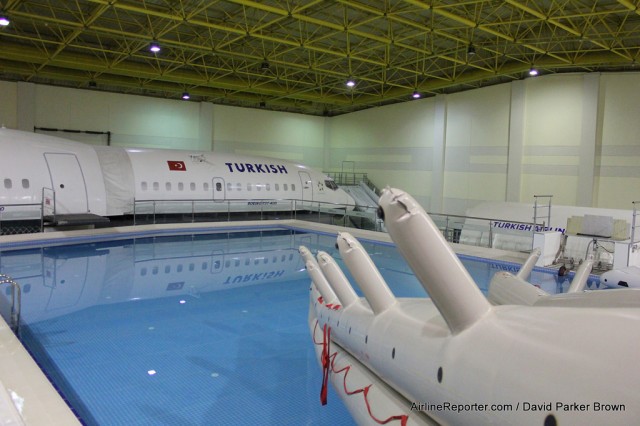
Who wouldn’t want a pool like this for themselves? Part 737, part A340/330/310, this is used for crew training at Turkish Airlines Photo: David Parker Brown | AirlineReporter
What has pools, slides, and airplanes? Okay, well the Evergreen Wings and Wave Waterpark does, but also the Turkish Airlines Flight Training Center in Istanbul. But this facility is not about fun and games – it is all serious business to make sure that passengers arrive safely to their destination.
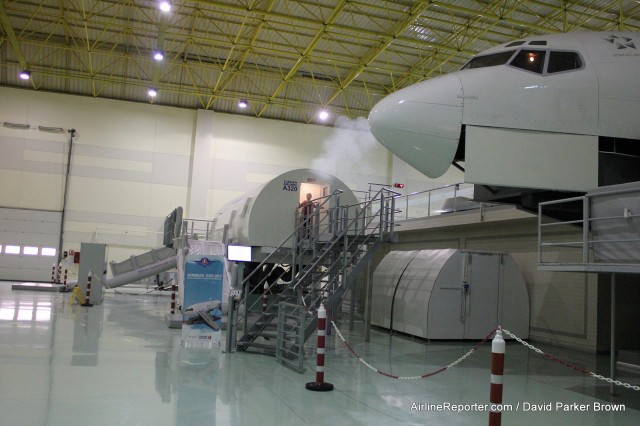
Notice the smoke coming out of the back of the Airbus A320 trainer
Recently, during a trip with the airline, I was invited to tour their facilities and I am never one to turn down such a tour. On the same day we were able to tour Do & Co, Turkish Airlines’ catering facility and then both the flight simulators and the crew training area. I already shared about the catering part of the trip and this story will highlight what I found during the rest of the day.
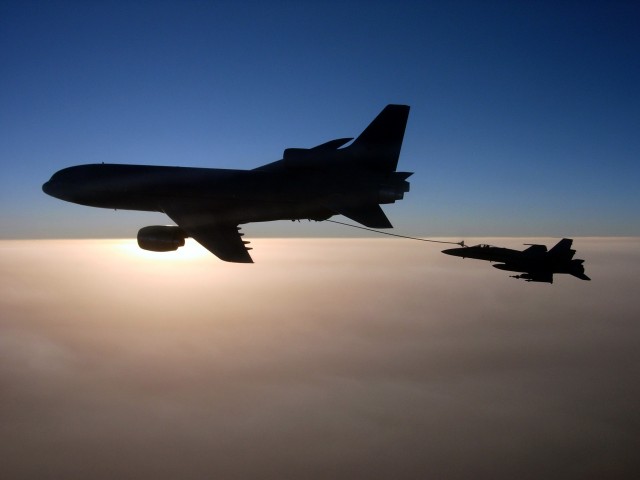
The twilight of the L1011 – refueling US Navy aircraft as part of Operation Enduring Freedom Photo: US Navy by Cmdr. Erik Etz
While 2014 may have been the end of commercial DC-10 services, many forget that the RAF (Royal Air Force) has been operating Lockheed L1011s (called “TriStars” in their parlance) as air-to-air refueling aircraft. Unfortunately for trijet enthusiasts, today marks the end of their service in the RAF. Even worse, they will be broken up in Bruntingthorpe.
As the resident Trijet Enthusiast – I was hoping for a little more notice from the RAF as to when the last RAF Tristar flight would happen. Thankfully, we have someone else who will be able to take the last flight and produce a fine report for AirlineReporter. As we await that final dispatch, let’s take a look back at the L1011 – an historical aircraft that even could have changed the pace of the Cold War.
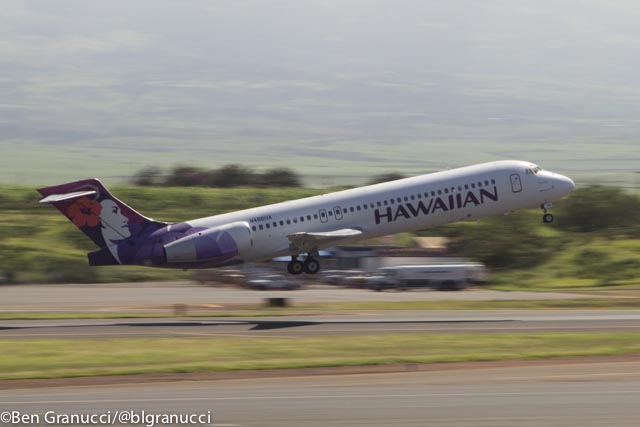
A Hawaiian Airlines Boeing 717 in Maui – Photo: Ben Granucci
When it comes to places with an abundance of short-haul flying, it is hard to beat Hawaii. Many of the islands are small enough not to have all of the essential services that their residents may need, though within the chain of islands they are available. And in a place where tourism is the number one industry, there must be a way for visitors to access the majority of the state, even though the vast majority of flights to and from the islands arrive at a single airport.
Many island chains have ferry service, however in Hawaii that service remarkably doesn’t exist today. A short-lived high-speed ferry system that opened several years ago took hours to transit the roughly 100 mile distance between Oahu and Maui. It closed after a judge ruled that the permitting process was flawed and the operator went bankrupt. Inter-island flying is now the only way to go.
In Hawaii, flying is king and competition is fierce. The last decade has seen both the entry of new carriers into the marketplace and some high-profile failures. Historically, there were two tiers of airlines providing service between the islands: large commercial airlines that flew to both the mainland and to major airports within the state, and commuter airlines that linked the major airports with smaller outlying airports. However in the last ten years, those lines have become blurred. Today, the air transport industry in the state finds itself in a state of flux.





